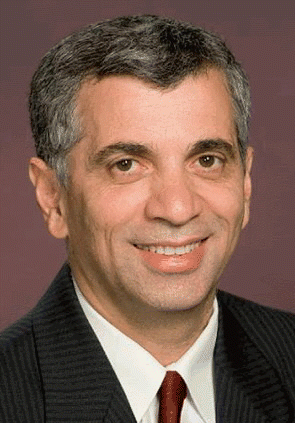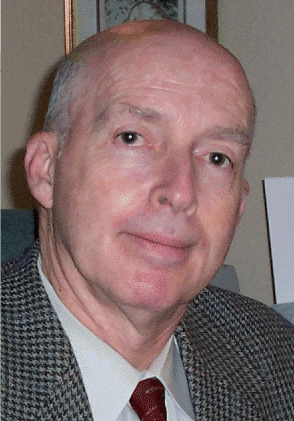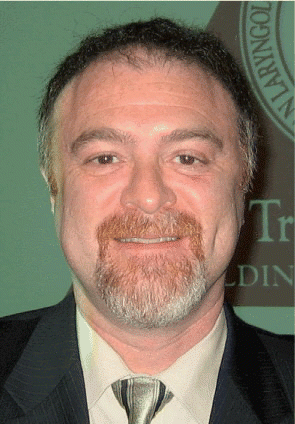Management of laryngeal cancer with a laser has grown from a treatment strategy once derided as malpractice to a cornerstone that has become replete with complex considerations for laryngeal surgeons, according to panelists who discussed the history and the future of the use of the laser to treat throat cancer.
Explore This Issue
May 2009But it is a strategy that has proven to be oncologically safe, as evidenced by multiple studies discussed by the group in a series of presentations that together formed a kind of tribute to the technology and those who have honed it.
Since the first treatment of a lesion on the larynx-a procedure first described in 1886, which involved a mirror and topical anesthesia with propane-the process has been highly fine-tuned, but it now presents more questions for the surgeons.
Every advancement since the direct laryngoscope in the meantime has historically enhanced surgical precision, said James Burns, MD, the moderator of the panel. So from about the 1920s on, improvements in general anesthetics, the introduction of the operating microscope in the 1960s, and the expanding use of lasers from the 1970s on have contributed to current treatment strategies of larynx cancer. So the question becomes: Is endoscopic management of laryngeal cancer oncologically safe?
Should the procedure be total or partial? How much of a role should preservation of voice function play and how should the prospects for voice function be analyzed? What is the role of imaging, and how should the patient be staged? What should be done surgically and what should be attempted through radiation therapy?
The devil is in the details a bit here, said Dr. Burns, a laryngeal surgeon at the Center for Laryngeal Surgery and Voice Rehabilitation at Massachusetts General Hospital and an Assistant Professor in the Department of Surgery at Harvard Medical School.
Gady Har-El, MD, Chairman of the Department of Otolaryngology-Head and Neck Surgery at Lenox Hill Hospital in New York, emphasized that there might be too much of an attempt at times to put off surgery and try to preserve voice function with radiation, when immediate surgery might yield good results as well.
If you look at statistics, including those from the American Cancer Society, you will see that there’s actually no improvement in survival rates from laryngeal cancer, he said.
 [Laser surgery results are] always better than what I expected-the patients are happier. The bottom line is maybe I need to change my expectation for this procedure.
[Laser surgery results are] always better than what I expected-the patients are happier. The bottom line is maybe I need to change my expectation for this procedure.
-Gady Har-El, MD
He said that treatment methods that delay surgery might be too risky, with too many physicians saying, Let’s try to preserve function, let’s try to preserve the larynx, and if it doesn’t work, we’ll do the surgery.
Guess what? Dr. Har-El said. Along this way, along the treatment protocol, we are losing people.
Laryngologists are often pointed in different directions, he said, noting two seemingly diametrically opposed statements from two prominent physicians, both made in 1994.
I believe that most patients with carcinoma of the larynx are best treated surgically, he quoted Jonas T. Johnson, MD, as saying.
He quoted Patrick Gullane, MD, as saying that he tends to treat all patients with T1 to T3 laryngeal cancers with primary radiation.
 It takes quite a bit of practice to learn how to do this properly. If you have a very large specimen, with an endoscope, it’s not easy to deal with.
It takes quite a bit of practice to learn how to do this properly. If you have a very large specimen, with an endoscope, it’s not easy to deal with.
-Stanley Shapshay, MD
Factors to Consider
Dr. Har-El said that voice preservation cannot be given the same weight for all types of laryngeal procedures. Voice expectations should be stratified according to the degree and the extent of the surgery that you do, he said.
Although he cannot always give patients predictable voice results with a CO2 laser, the results are usually relatively positive. It’s always better than what I expected-the patients are happier, he said. The bottom line is maybe I need to change my expectation for this procedure.
In these cases, he said, a request for secondary augmentation to improve voice quality is the exception, not the rule.
With so many treatment options available, quality of life factors have to be considered, including airway protection, speech, swallowing, and many others. When quality of voice is factored in, doctors should keep in mind an important point: Most patients are not professional voice users.
He also emphasized that some tumors respond better to radiation than others-T2a responds better than T2b-and that must be factored in.
He also said that the length of the treatment package has an impact on survival rates that is independent of the stage of the disease.
Developments in Laser Procedures
Stanley Shapshay, MD, Professor of Otolaryngology at Albany Medical College in New York, said that the use of the laser has come a long way since Jako’s landmark 1972 paper, Laser Surgery of the Vocal Cords on Dogs.
That was followed by the development of clinical applications for benign and malignant indications of using the laser by M. Stuart Strong, MD, and Charles W. Vaughan, MD.
Images from their work show clean cuts in their procedures, demonstrating a principle that Dr. Shapshay said still holds true today. It’s really the surgeon who uses the tool who really makes the difference, he said.
Nonetheless, their novel approach was met with biting resistance. Comments were made to Drs. Strong and Vaughan that, ‘You’re committing malpractice by using a laser. This is not surgery. We use a scalpel to do surgery.’
That criticism probably stalled further development, Dr. Shapshay said. I think it set back progress a number of years, he said. Dr. Strong was afraid of pursuing this further, I believe, because of the comments and criticism that he received of doing endoscopic resection of cancer.
In the end, history has shown that, Dr. Shapshay said, We really need to keep an open mind.
The numbers presented by Dr. Shapshay demonstrate the success of the laser.
A study published as early as 1984 showed that in 103 cases of lesions treated with an excisional bx-CO2 laser, most had good results three years later. In 35 cases of squamous cell carcinoma, 31 showed no evidence of disease, an 89% success rate. All 12 cases of verrucous carcinoma showed no evidence of disease, and all three cases of spindle-cell carcinoma were without disease.
Advancements have been made in refinement of the instruments and the lasers, Dr. Shapshay noted. There are new laryngoscopes for both glottic and supraglottic exposure, including triangular design and a bivalve for wide exposure. Refinements in the use of the CO2 laser-delivery have included smaller spot size and suprapulse delivery. And there are new microlaryngeal instruments for transoral laser microsurgery, with suction, cautery, and vascular clips, as well as angled telescopes.
In another milestone, Walter Thumfart, MD, and Hans Eckel, MD, introduced their four forms of endolaryngeal laser partial laryngectomies: the vocal cord mucosal type, for tumors in situ; the cordectomy for the anterior one-third of the cord, for T1a lesions; the extended cordectomy, from the anterior commissure to the cartilage to the cricothyroid membrane, for T1b lesions; and laryngeal exenteration, for T2 lesions.
 When prognosticating voice outcome subsequent to early glottic cancer treatment, patients’ particular anatomy and how much lamina propria they may have underlying the tumor can be as important as the shape and location of the cancer.
When prognosticating voice outcome subsequent to early glottic cancer treatment, patients’ particular anatomy and how much lamina propria they may have underlying the tumor can be as important as the shape and location of the cancer.
-Stephen M. Zeitels, MD
Evidence of Effectiveness
Dr. Shapshay presented a litany of evidence vouching for the effectiveness of endoscopic treatment (see sidebar). Certainly, it’s proven to be oncologically safe for selected patients with early and advanced glottic and supraglottic cancer, he said.
But he cautioned that patients should be chosen carefully for transoral laser microsurgery. Surgeons need good pathology support, and there’s no substitute for experience. It takes quite a bit of practice to learn how to do this properly, he said. If you have a very large specimen, with an endoscope, it’s not easy to deal with.
Steffen Maune, MD, PhD, Professor and Head of the Department of Otorhinolaryngology-Head and Neck Surgery at the Municipal Hospital in Cologne, Germany, emphasized the importance of diagnostic techniques before surgery is performed, including endoscopy and ultrasound of the neck.
He also drew attention to the use of the stepwise resection, removing a lesion through a series of cuts rather than one sweeping move. This allows microscopic control of the incision, better control over the deeper parts of the procedure, and identification of the relationship of the tumor to the cartilage, and means better observation of resection margins. In addition, he highlighted the need for carefully handling of the tumor to avoid the spread of metastases.
We are able to decide how much distance we want to have, he said. You need either R-0 resection, which is very important for the prognosis, or optimal postoperative function, which is part of the advantage of the laser. It lets you peel down to get to an R-0 situation correlated with optimal quality of life.
Steven M. Zeitels, MD, the Eugene B. Casey Professor of Laryngeal Surgery at Harvard Medical School and the Director of the Center for Laryngeal Surgery and Voice Rehabilitation at Massachusetts General Hospital in Boston, said there were exciting prospects for restoring voice through phonosurgical procedures.
In a case he presented, a woman who was nearly without a voice due to a T2b glottic cancer in which the dominant side of the cancer extended out to the thyroid lamina.
We decided to split the tumor, cut one side out conventionally, and treat the other side with an angiolytic laser to see if we could recover any epithelial superficial lamina propria, he said.
On the side in which the cancer was resected to the thyroid lamina, the vocal fold was reconstructed with a fat transplantation as well as a transcervical medialization laryngoplasty and anterior commissure thyroid lamina subluxation. Five years later, she had voice that wasn’t perfect, but functioned quite well. Her glottal valve was aerodynamically competent. This is a pretty reasonable voice for where she started, he said. She functions completely as a management professor by utilizing just one vocal fold to oscillate.
He then discussed the case of a prominent Israeli comedian who had voice problems. He’s a little hoarse, but when you see what was inside of him, it’s quite remarkable, Dr. Zeitels said. This was circumferential glottic and subglottic exophytic papillary cancer that had progressed all the way into the trachea.
But although the tumor was widespread within the larynx, it was not growing deep into the paraglottic space. By using the 532-nm pulsed-KTP laser, the cancer has been controlled, and his voice is now better than it had been in a decade.
When prognosticating voice outcome subsequent to early glottic cancer treatment, patients’ particular anatomy and how much lamina propria they may have underlying the tumor can be as important as the shape and location of the cancer, Dr. Zeitels said.
He also discussed the exciting prospects of the use of biomaterials to help restore voice, pointing out how researchers have shown how a piece of biomaterial can restore pliability even to a vocal cord made stiff by inserting a plastic angiocatheter submucosally through the vocal fold of a cadaver.
The catheter-stiffened vocal fold simulates the vibratory characteristics of a successfully treated cancer. It’s stiff as a board, so that we have to get something underneath the membrane to restore pliability, Dr. Zeitels said.
Is this perfect? No, he said. Can you re-establish vocal-fold vibration? Yes-even with a piece of plastic still there.
This is kind of exciting, because you can imagine this is the future of cancer management, he said. This, ultimately, for many patients will turn into an office-based injection procedure.
Studies Indicate Procedure’s Efficacy
A study on laser treatment presented by Wolfgang Steiner, MD, in 2005 showed that of 333 patients with T1a tumors, 89.3% had their lesions controlled after five years, and 97.6% of those had their larynx preserved.
Out of 212 patients with T2 tumors, 84% with the T2a type had their lesions controlled after five years, as did 74% of the T2b patients. The larynx had been preserved in 95% of the T2a patients and in 85% of the T2b patients.
In 2006, a study by Giorgio Peretti, MD, et al. showed that endoscopic resection for early glottic cancer patients yielded good results. The 13 patients with tumors in situ had a local control rate of 92% after five years, and 75 patients with T1 lesions had a rate of 90%. The larynx had been preserved in 94.4% of patients. The 67 patients with T2 type glottic cancer had a local control rate of 82% after five years, and the larynx was preserved in 94% of the patients.
Dr. Shapshay said that with his own patients, from 1982 to 2006, he achieved good results with endoscopic treatment.
Out of 287 patients with severe dysplasia and cancer in situ, the control rate was 85%, with a follow-up after at least 30 months.
For 185 patients with T1a lesions, the control rate was 91%. For 14 patients with T1b and T2 lesions, the rate was 82%. For 31 patients with recurrent T1 lesions who received post-op radiation therapy, it was 79%, and for 27 patients with either verrucous and spindle-cell carcinoma, it was 90%.
In a 2007 study by Michael Hinni, MD, et al., 117 patients were treated with transoral laser miscrosurgery for lesions from T2 to T4, both glottic and supraglottic, with 45 also receiving radiation therapy. For 92% of the patients, the larynx remained intact. The five-year local control rate was 74%, and the combined local and regional rate was 68%.
©2009 The Triological Society
Leave a Reply